How Can Karyotypes Be Used to Predict Genetic Disorders
Karyotyping
Karyotyping, or claret chromosome analysis, is a highly useful test in the diagnosis and management of fertility issues. All the same, nigh people who undergo the test don't have a good understanding of why it is done or what the results reveal.
The prefix "karyo" refers to the fact that the nucleus of the cell is studied, and the base of operations word "type" refers to the fact that the examination is a characterisation, or analysis of the character. Put together, the word karyotype means a characterisation of the cell nucleus.
- What are cells?
-
Our bodies are made upward of billions of cells. There are many different kinds of cells, including blood cells, pare cells, and bone cells. Our genetic textile is contained in a structure within the prison cell chosen the nucleus. Every cell in the trunk, with the exception of the cerise blood cell, has its own nucleus containing a complete ready of genetic cloth.
- What'south inside a cell nucleus?
-
Inside of a normal nucleus of the cell there are 46 rod-shaped structures called chromosomes. The chromosomes come in pairs, 23 coming from the female parent and 23 coming from the begetter. Scientists label the chromosomes with numbers, calling them chromosome number 1 through chromosome number 22. The 23rd pair of chromosomes are the sex activity chromosomes, normally two 10's for a female or one X and 1 Y chromosome for a male person.
The chromosomes vary in size according to the number, with chromosome number 1 being the largest and chromosome number 22 being labelled the smallest of the numbered chromosomes. The X chromosome is nearly the aforementioned size every bit the number seven chromosome, and the Y chromosome is much smaller, most the size of a number 21 or 22 chromosome.
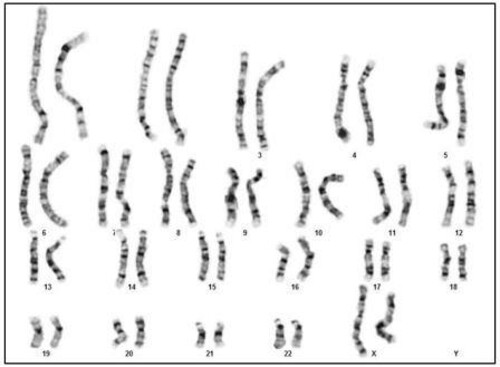
- What's inside a chromosome?
-
Each chromosome contains hundreds or thousands of genes, depending on the size of the chromosome. Genes are units of heredity and are constructed of Dna. For the most function, individual genes are too small to be seen fifty-fifty through a powerful microscope. Chromosomes, however, can exist seen under a microscope.
- What is a karyotype?
-
A karyotype is a photograph of all of the chromosomes of an individual cell. The chromosomes in the karyotype are usually lined upwards into rows in pairs, so that they are in order from the largest to the smallest in size. The photograph is taken through a microscope, so that the longest chromosomes usually announced to be about an inch long. In reality, of course, they are so small that they are non visible to the naked centre.
- How is a karyotype analysis performed?
-
Karyotypes are usually constructed by laboratory scientists and analysed by cytogeneticists who are trained specialists in the study of chromosomes. The cells must exist grown and advanced to a specific cell phase that is optimal for assay. The process of growing the cells, dropping them onto slides, arranging the chromosomes into a karyotype and assay by a cytogeneticist usually takes 1-two weeks in our laboratory.
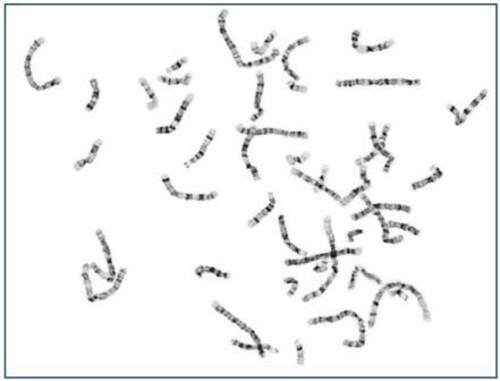
46, XY Metaphase (pictured above)
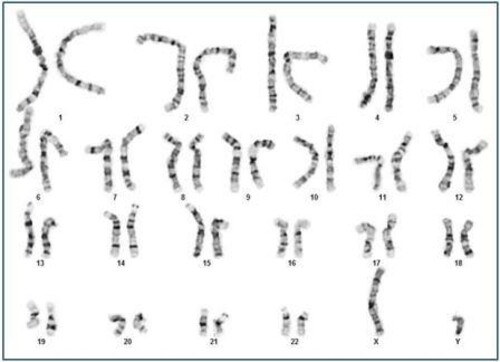
46, XY Karyotype (pictured above)
- What tin can a karyotype test tell u.s.?
-
Karyotype analysis determines the number of chromosomes in the cells and whether at that place are whatever pieces of chromosomal material that are missing, extra or rearranged. Any variation from the normal chromosome number and arrangement tin have implications for a person's fertility and the risk for having a baby with birth defects.
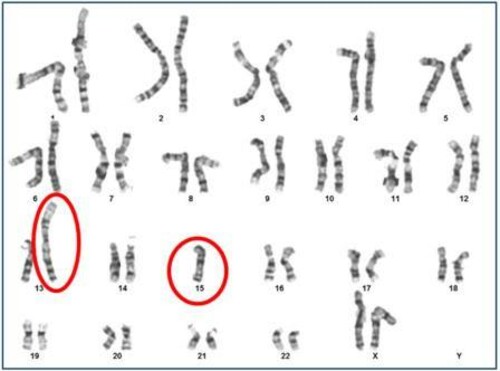
Translocation betwixt 13/15 (pictured to a higher place)
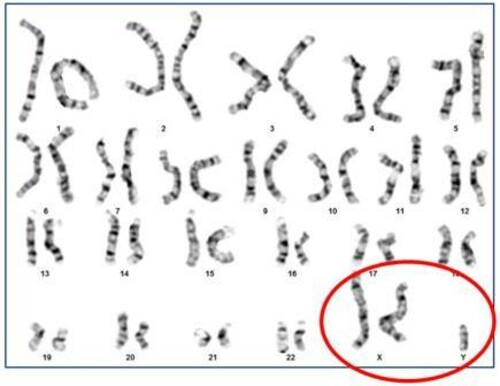
Sex Chromosome Variation (pictured in a higher place)
- What can't a karyotype tell us?
-
At that place are many genetic disorders that are the result of single factor mutations such as very small deletions or duplications of the genes or very subtle chromosome rearrangements. Additionally, there are many genetic disorders that are caused by multiple genes interacting. These disorders cannot exist detected past chromosome analysis.
Examples of conditions that cannot be detected by karyotyping include:
- Cystic fibrosis
- Tay-Sachs affliction
- Sickle prison cell disease
- Dwarfism
These are only a few examples. The complete list would comprise thousands of genetic disorders that cannot be detected by chromosome analysis. However, many of them tin can be detected by other methods if required – please discuss with your Fertility Specialist.
Source: https://www.qfg.com.au/tests-treatments/genetic-testing/karyotyping
0 Response to "How Can Karyotypes Be Used to Predict Genetic Disorders"
Post a Comment